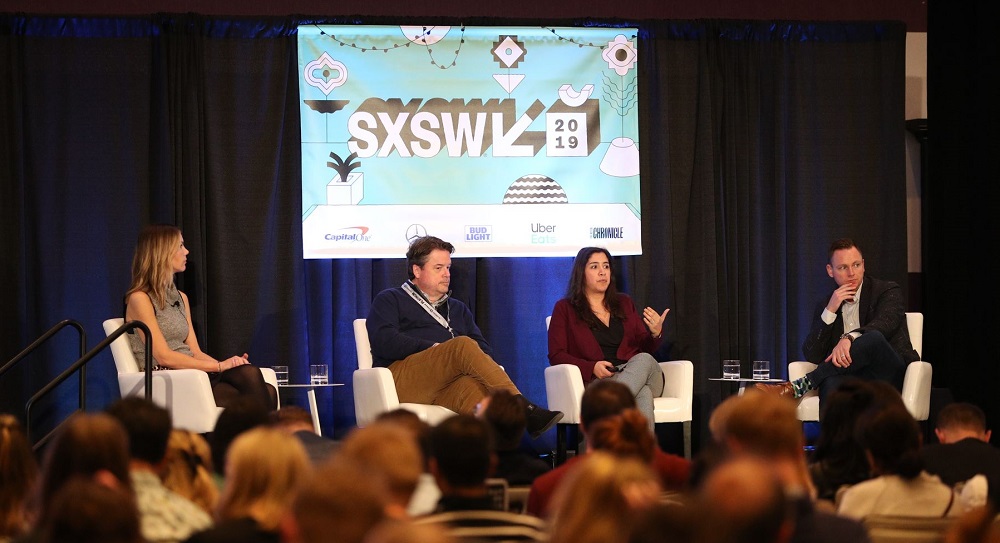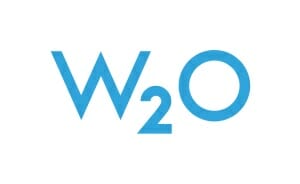
There was no shortage of bold ideas, inspiring discussions, and revelatory conversations during W2O’s partner programming at South by Southwest 2019. From March 11-12, speakers examined technology’s impact – both present and future – on the healthcare ecosystem, as the various stakeholders pursue better outcomes for patients.

W2O kicked off the first day with its eighth PreCommerce Summit, hosted at the company’s Austin headquarters. The event featured 13 sessions, including fireside chats, panels, and co-presentations delivered by W2O staff, clients, and industry partners.
W2O founder and CEO Jim Weiss welcomed the audience of healthcare marketers and other industry personnel with his predictions on the impact of technology on healthcare. “Tech will disrupt healthcare, more than any other industry it has disrupted. The way healthcare is delivered will change dramatically over the next 3-5 years, faster than we’ve seen it in the past 300,” he said.
During the two-day event many speakers stated healthcare has significantly lagged behind other industries in its adoption of technology and acknowledged this is on the verge of changing.
The Uber-ization of healthcare will shake up the ecosystem, Weiss noted, allowing consumers to customize what type of healthcare they want and how they want it delivered.
How Big Brands are Improving America’s Health
W2O’s opening session on March 12 focused on How Big Brands are Improving America’s Health. Dan Childs, Bayer’s director of U.S. external communications, moderated a panel that included Dawn Laguens, IDEO expert-in-residence and former Planned Parenthood EVP and chief brand officer; Heidemarie Schnell, head of marketing at Spotlyte, which sits inside Allergan, and Larry Dobrow, MM&M senior editor.
The U.S. healthcare’s defining characteristic is that it is fractured, said Childs. “It is divided across many different lines — demographically, geographically, even generationally,” he explained. “What are we going to be able to do to make this a more cohesive system that’s able to provide everyone what they need? This is the question before brands today.”
Part of the challenge is that healthcare is huge and broad, said Schnell. “When I entered this industry years ago, healthcare was pharmaceuticals,” she added. “It was drugs and prescriptions, and now it’s meditation and feeling good about yourself. It’s a whole new world and one of the things big brands can do is join that conversation. Instead of trying to get people to speak their language, brands need to learn to speak the consumer’s language.”
One area for brands to tap into is telehealth, which Laguens highlighted as offering great promise. It is embraced by consumers who are technology-forward and excited by its convenience, but “it’s also really powerful for rural and low-income people,” she said. “In addition to just the regular cost of seeking healthcare, it’s eliminating the cost of extra childcare and of missing work.”
Brands such as Oscar Health are narrowing their focus to drive engagement, noted Dobrow. In Oscar Health’s case, it is to the smartphone-savvy cohort.
“The real danger in something such as that is you’re creating this generational divide and saying, ‘All right, some people aren’t going to want to use our products and are not going to want to communicate with us exclusively through their cellphone,’” he said. “That cuts off a larger part of the overall demographic.”
EQ in the ER: Building Empathy Through XR
Tech adoption is going to really take off, said Anita Bose, W2O chief business development officer, as she set the stage for the session, EQ in the ER: Building Empathy Through XR. “We feel like we are at this inflection point.
“What are some of those best practices to drive and accelerate innovation and advance healthcare, but how do we do that in a way that doesn’t take away from that human element?” she asked.
Answering that question were Dr. Rasu Shrestha, EVP and chief strategy officer at Atrium Health, one of the largest not-for-profit healthcare systems in the country, and Stephen Ibaraki, a serial entrepreneur investor, futurist, and founder of AI for Good Global Summit, a part of the ITU World Health Organization partner program.
“The embrace of technology by healthcare has been pitiful at best and disastrous at worst,” noted Shrestha. “It’s given rise to things such as clinician burnout.”
But he’s optimistic about the ability of technology to foster empathy. “We’ve been moving from analog to digital by essentially blindly embracing digital,” Shrestha explained. “The next leap forward is for us to embrace digital to augment the most humanistic aspects of care.”
For example, Shrestha described recent virtual reality applications. There are simulations that allow healthcare providers to experience what it’s like to live with a chronic disease, giving them a better understanding of their patients’ challenges. VR is also being used to help young patients manage pain during a hospital stay.
Ibaraki agreed, sharing the results of the McKinsey Global Institute Industry Digitization Index, which tracks 30 different industries’ adoption of technology. Healthcare was one of the bottom three in terms of adoption. “That’s going to change,” Ibaraki stressed. “There’s going to be a dramatic change, and it’s going to happen in the next three years.”
That change will not only encompass the application of big data, machine learning, and AI to improve healthcare delivery, explained Ibaraki, but will also include quantum computing, robotic technologies, and blockchain – which is attracting attention as the reliable method to keep data records secure in the healthcare environment.
Insights to Actions: Analytics-Powered Marketing
The session Insights to Actions: Analytics-Powered Marketing featured Kevin Johnson, W2O’s president of analytics; Julissa Viana, senior director of global social media for Celgene; Mark Stouse, CEO of Proof Analytics; and Bethany Hale, head of marketing at Cedar. This quartet of marketing experts discussed the practicality of analytics and how they can be applied to marketing strategy.
Recruiting for clinical trials is a consistently difficult and challenging process for pharma brands. To recruit for IBD clinical trials, Viana’s team designed a social media campaign, leveraging insights gleaned from social listening triangulated with other data points. “This was the first time we applied the insights to something more meaningful in our copy and our visuals, and it paid off in a way we haven’t seen before,” she said.
W2O’s client marketing strategy process integrates creative, strategy, and activation with the analytics team, said Johnson. “We can’t get to those insights that are going to drive the strategy without partnering with all of those groups from the very beginning.”
Panelists cited the benefit of looking beyond the traditional datasets. “Bringing together data that may not appear at first blush to be relevant can help you uncover some really interesting insights, some of which have kind of tactical or operational level relevance, and some that can actually drive business,” explained Stouse.
While data can help inform marketing strategy, it can also indicate where there are obstacles, “for example, when not enough people have decided they want to opt into text messaging,” Hale noted. “But that doesn’t tell us why they haven’t opted in for text messaging.
“You have to take that metric and then go and figure out the why,” she added. “That means getting closer and talking to your customer, and then doing some hypotheses testing that could ultimately drive what you do next in your results.”
W2O’s additional March 12 sessions included Marketing in an Industry Where Change is the Norm, and Marketing’s Role in the Rise of Health Activism. The key takeaway for marketers? Listen, listen, and listen.
The complete video recap of W2O’s partner program is available on their YouTube playlist W2O SXSW 2019.






